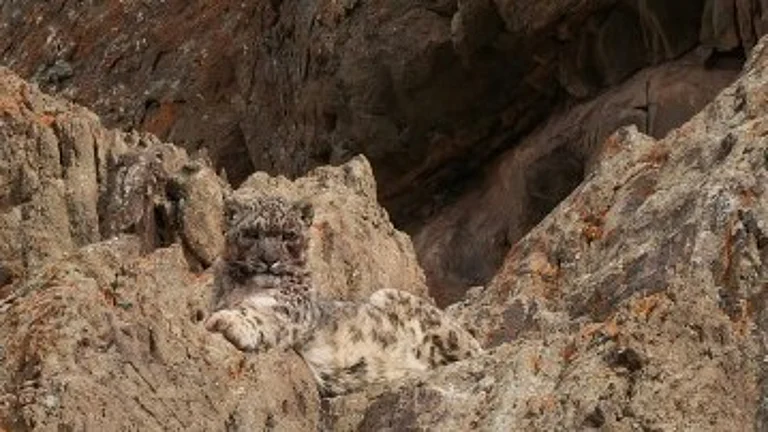Over a dozen snow leopards now permanently inhabit Kishtwar Himalayan region.
Camera traps reveal up to 20 adult snow leopards in J&K.
Addressing climate threats and human intervention is necessary to protect snow leopards.
Year-Round Sightings of Snow Leopards in J&K Signals End of Migratory Status for Elusive Feline: Report
Resident snow leopards spotted year-round in Jammu and Kashmir, study confirms
A study based on a collaboration between non-profit Nature Conservation Foundation (NCF) and the Department of Wildlife Protection, Jammu and Kashmir, in the Kishtwar Himalayan region revealed that the snow leopards, also known as ‘ghosts of the mountains’ no longer fall in the category of migrant population in Jammu and Kashmir as over a dozen snow leopards have made the region their home.
According to the NCF study, the camera trapping was conducted across three regions—KHANP, Paddar and Warwan. Researchers like Hameed detected about 12 individual snow leopards in 22 camera traps and the number can reach up to 20 adult individuals. Researcher Shahid Hameed, Project coordinator of the NCF study told Down To Earth that communities in Jammu & Kashmir face livestock depredation and crop damage. These challenges often lead to negative perceptions of wildlife, including the snow leopard.
According to The New Indian Express, the Snow Leopard Population Assessment of India had initiated in 2020 following the directions of the Central government. The exercise was completed in Himachal Pradesh in 2021. It took another two years in Uttarakhand, Sikkim, Arunachal Pradesh and Ladakh and in J&K, the exercise was wrapped up this year.
As per reports, there are 400 snow leopards in Ladakh, 80 recorded in Himachal Pradesh, 100 in Uttarakhand and 20 each in Sikkim and Arunachal Pradesh.
The previous reports of sightings in Jammu and Kashmir did not have any verifiable reports to back them and prove whether the snow leopards were residents or migrants. To understand the seasonal presence and landscape use of snow leopards, the detailed study was undertaken by placing camera traps in the Zojila region of Kashmir and the Paddar region of Jammu between September 2024 and May 2025.
Conservation Challenges Persist
The snow leopard is one of the flagship species of the Indian Himalayas, inhabiting both the eastern as well as the western regions. The study says that the range of the snow leopard is across vast areas, which are “predominantly located outside formal protected areas”. These areas are also home to local communities, mostly nomadic livestock herders, who keep large herds.
To safeguard snow leopards, the Government of India launched Project Snow Leopard in 2008. India’s SPAI or the Snow Leopard Population Assessment in India is in alignment with the global Population Assessment of the World’s Snow Leopards or PAWS. The species is found in the mountains of Central and South Asia: Besides India, it is found in Afghanistan, Bhutan, China, Kazakhstan, Kyrgyz Republic, Mongolia, Nepal, Pakistan, Russian Federation, Tajikistan, and Uzbekistan. The global estimated snow leopard population is between 4,000 and 6,500 individuals.
According to The New Indian Express, the establishment of resident snow leopard population in Jammu and Kashmir shows the ongoing efforts directed at the conservation of the species. Underscoring challenges related to human intervention, habitat degradation and climate change, forest officials told The New Indian Express that addressing these issues through collaborative conservation strategies is the need of the hour to ensure the long-term survival of the species in the region.
